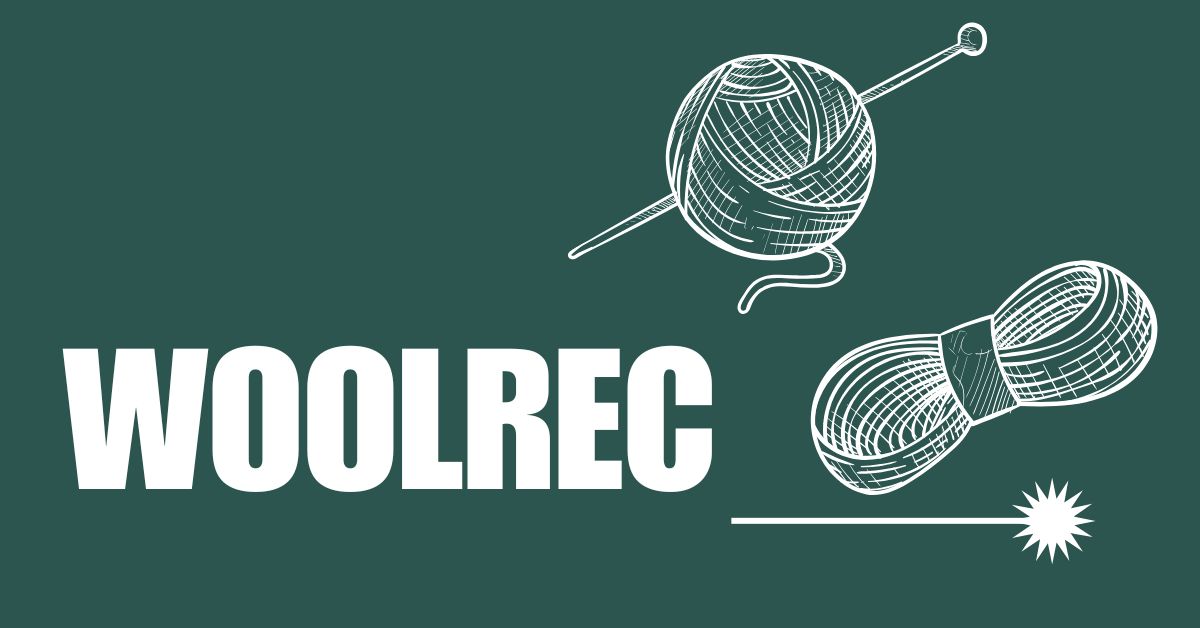WoolRec is revolutionizing the textile industry by introducing innovative methods of recycling wool. With increasing environmental concerns and the fashion industry’s massive carbon footprint, WoolRec provides a solution to reduce waste while creating high-quality recycled wool products. But how exactly does it work, and why is it becoming a major player in sustainable fashion? Let’s dive deeper.
The Origins of WoolRec
WoolRec started as a small initiative aimed at reducing textile waste. The founders noticed that vast amounts of wool garments were being discarded every year, creating unnecessary environmental strain. By developing a system to reclaim and recycle wool fibers, they laid the groundwork for an eco-friendly solution that is both efficient and sustainable.
Why Wool Recycling Matters
Recycling wool is crucial because wool production is resource-intensive. Traditional wool farming uses significant water, land, and energy. By recycling existing wool, WoolRec helps reduce the demand for new raw materials, cutting down on greenhouse gas emissions and lessening the environmental impact of the textile industry.
How WoolRec Works
WoolRec uses a multi-step process to transform old wool garments into reusable fibers. The process begins with collecting discarded wool products, which are then sorted and cleaned. Next, the fibers are carefully shredded, blended, and re-spun into new yarn. This ensures the recycled wool maintains quality and durability comparable to new wool.
Technological Innovations Behind WoolRec
WoolRec stands out due to its advanced machinery and techniques. Unlike traditional recycling, which can weaken fibers, WoolRec uses gentle mechanical and chemical methods to preserve fiber length and strength. This innovation allows recycled wool to be used in premium products without sacrificing quality or texture.
Environmental Impact of WoolRec
The environmental benefits of WoolRec are substantial. By recycling wool, it prevents tons of textile waste from ending up in landfills. Additionally, it reduces the water and energy consumption required for new wool production. Studies suggest that every kilogram of recycled wool saves thousands of liters of water and significantly cuts carbon emissions, making WoolRec a leader in sustainable textiles.
Economic Benefits of WoolRec
Besides environmental impact, WoolRec also brings economic advantages. Recycling wool is cost-effective because it reduces dependency on raw wool. For manufacturers, this translates into lower production costs. Furthermore, consumers are increasingly willing to pay a premium for eco-friendly products, creating new market opportunities for recycled wool items.
Applications of WoolRec Products
Recycled wool from WoolRec can be used in a variety of products. From fashion garments like sweaters and coats to home textiles such as blankets and rugs, the applications are wide-ranging. Some companies are even experimenting with high-end designer collections using recycled wool, proving that sustainability and luxury can coexist.
Quality Assurance in WoolRec
One common concern about recycled wool is quality. WoolRec addresses this through rigorous quality control. Every batch undergoes testing for strength, softness, and color consistency. This ensures that the final product is not only sustainable but also meets consumer expectations in durability and feel.
The Role of WoolRec in Circular Fashion
WoolRec is a key player in the circular fashion movement. Circular fashion emphasizes reusing materials and minimizing waste throughout the product lifecycle. By providing a reliable source of recycled wool, WoolRec helps brands transition from a linear “take-make-dispose” model to a more sustainable, circular approach.
Consumer Awareness and Education
Educating consumers about the benefits of recycled wool is essential. WoolRec invests in campaigns to raise awareness about environmental issues associated with textile production and the advantages of recycled wool. This not only promotes responsible purchasing habits but also encourages broader industry adoption of sustainable practices.
Global Reach of WoolRec
While WoolRec started locally, it has rapidly expanded its reach globally. Many countries are adopting WoolRec’s model to manage textile waste more effectively. Collaborations with international brands and retailers help scale its impact, making recycled wool accessible to consumers worldwide.
Challenges Faced by Wool’Rec
Despite its successes, WoolRec faces challenges such as collection logistics, consumer perception, and competition with cheap synthetic fibers. Overcoming these obstacles requires continuous innovation, education, and partnerships to ensure recycled wool maintains a competitive edge in quality and cost.
Future Prospects for WoolRec
The future looks promising for WoolRec. As sustainability becomes a core value in fashion and manufacturing, demand for recycled wool is expected to grow. Innovations in fiber technology, expanding recycling infrastructure, and increasing consumer consciousness will likely propel Wool’Rec to the forefront of sustainable textiles.
Conclusion
WoolRec represents a significant step forward in sustainable textile production. By transforming discarded wool into high-quality products, it reduces environmental impact, saves resources, and promotes a circular economy. For consumers, it offers the chance to enjoy stylish, durable, and eco-friendly wool products. For industries, it provides a sustainable path forward while maintaining profitability and quality.
FAQs
What types of wool can Wool’Rec recycle?
WoolRec can recycle a variety of wool garments including sweaters, coats, scarves, and blankets, as long as the wool content is high enough for effective processing.
Is recycled wool as durable as new wool?
Yes, WoolRec uses advanced techniques that preserve fiber strength, ensuring recycled wool maintains comparable durability and softness.
How does Wool’Rec benefit the environment?
By recycling wool, it reduces textile waste, lowers carbon emissions, and saves water and energy that would otherwise be used in producing new wool.
Can designers use Wool’Rec wool for high-end products?
Absolutely. WoolRec wool is suitable for premium fashion lines, offering luxury quality while remaining eco-friendly.
Where can consumers buy WoolRec products?
Many global brands and online retailers now offer WoolRec products, making sustainable wool accessible to a wide audience.
